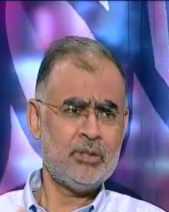Nadeem M Qureshi
That the political system in Pakistan needs changing is indisputable. The ‘Whitehall’ model has failed to deliver. Elections routinely bring into parliament the incompetent, insincere and corrupt. They come for the spoils. As ministers, they loot from the exchequer in the form of kickbacks and bribes. As members of parliament, they loot from public works funds allocated for their constituencies. Any solution must remove this monetary incentive.
What would possibly go some way toward achieving this goal is a presidential system – somewhat like the American system: The President should be directly elected by the public. This would ensure that anyone rising to the office of President of Pakistan would have broad public support. And the tragedy of today – a man widely reviled by the public as our President – would never occur again.
The directly elected President would nominate a cabinet of professionals choosing from the best people in the country. Ministries are large immensely complex organizations. Managing them is well beyond the severely limited competence of our present politicians.
Another important element needed for the new system to work is to take away development funds from assembly members. These funds would be allocated directly to local bodies or concerned organizations.
Assembly members would now be tasked only with legislation, reviewing and approving government and agency budgets, and vetting the President’s nominees for the cabinet. Since they would no longer be ministers, or be allocated development funds the incentive for monetary gain will be removed. And hence only people who are competent and committed to serve the country will seek election to assemblies. The crooks will no longer be interested.
One final element needs to be put in place for this new system to be complete: Elections to assemblies must be on the basis of proportional representation. The current winner-takes-all or first-past-the-post system is grossly unfair. Consider as an example a constituency in which one candidate gets 51% of the vote and another 49%. In the winner-takes-all system only the winner will go to the assembly. Fifty one percent of voters will get representation and 49% will have no voice.
In the proportional representation system no vote is ignored. Prior to the election, all political parties submit a prioritised list of candidates from all constituencies. The public votes for candidates from their constituencies. But now votes in all constituencies are added up by party. So if one party wins 51% of the total popular vote, and the other 49%, then if there are 100 constituencies – the first 51 candidates on Party 1’s list go to the assembly. And the first 49 candidates on Party 2’s list go to the assembly. This way the people sitting in the assembly represent all voters not just a slim majority.
 Nadeem M Qureshi is Chairman of Mustaqbil Pakistan. He can be reached on Twitter at: @nmq
Nadeem M Qureshi is Chairman of Mustaqbil Pakistan. He can be reached on Twitter at: @nmq
https://vimeo.com/channels/mustaqbilpakistan
https://www.facebook.com/Mustaqbil.Pakistan